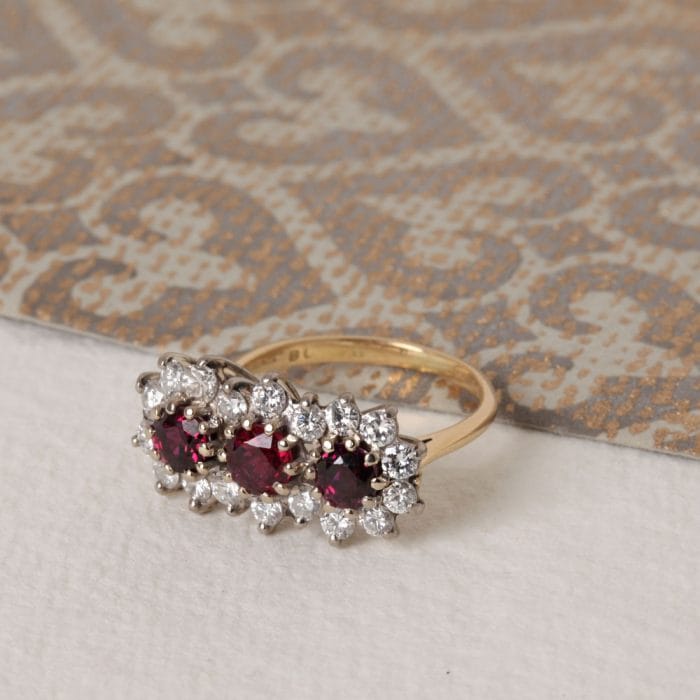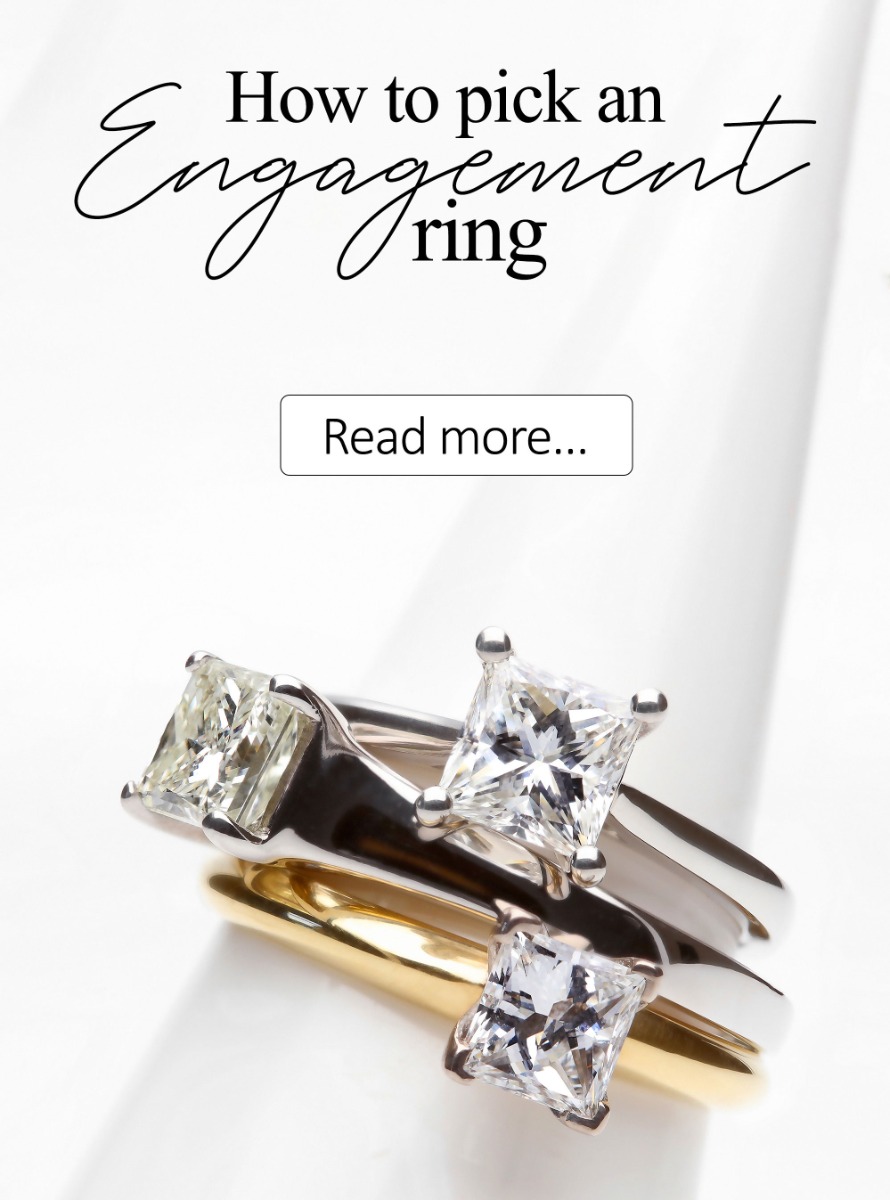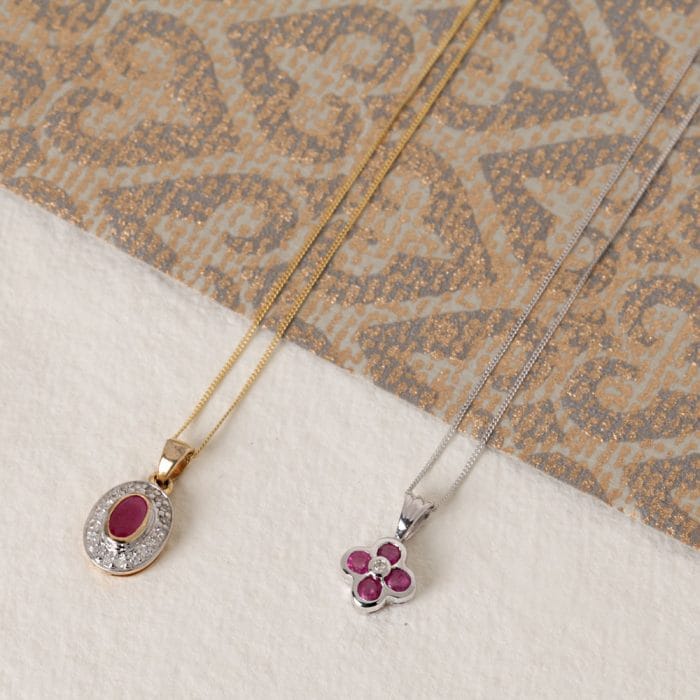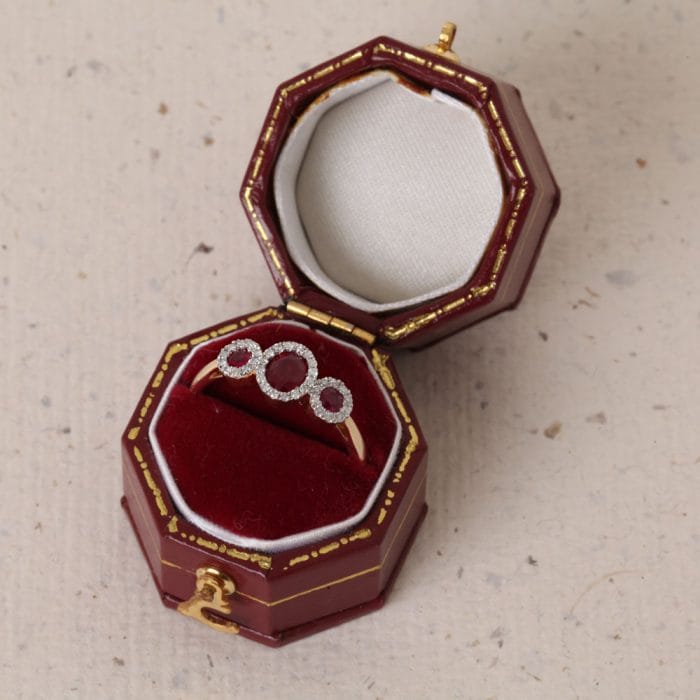Red is the colour of our most intense emotions; love, passion, anger and fury. The name ruby comes from the latin word "rubeus" which means red. In ancient Sanskirt ruby translated to ratnaraj, which meant "king of precious stones." It is said that if you wear a ruby, it will bring good fortune to the wearer.
Early cultures believed that rubies held the power of life because they were similar to blood. They are mentioned four times in the Bible and represent beauty and wisdom. Rubies are one of the five cardinal stones, which are gemstones said to be the most precious, with the others being; amethyst, sapphire, emerald and diamonds.
Ruby is part of the corundum mineral family and gets its colour from the element chromium. All other colours of this mineral are called Sapphire, which shows colour is highly important for this stone. Chromium also gives rubies their fluorescence which makes them glow. However, it is chromium that makes the gem more rare as it can causes cracks through them. Not many rubies actually grow large enough to form into high quality gemstones which is why they sometimes have higher prices than diamonds.
Although rubies have a long history, they weren't actually recognised as part of the corundum family until 1800. Up until then, red spinel, tourmaline, and garnet were also believed to be ruby. Even one of the crown jewels of England, called the Black Ruby, was thought to be one of the largest cut rubies until it was discovered that it was in fact spinel.
Rubies come in a range of different shades that vary from purplish to bluish to an orangey red colour. The brightest and the most expensive colour is the "Burmese ruby" which is also called the Pigeon's Blood Ruby.
The most sought after rubies were mined in Mogok Valley in Burma for centuries, especially gems in a deep red shade. It was said that rubies were once put under the skin of tribal warriors there as they thought it would make them invincible in battle. Since the 1990s, rubies have been made in Mong Hsu, Myanmar but they don't have the same deep red shade as the ones from Mogok Valley. Therefore, rubies from Mong Hsu are often treated with heat techniques to improve the colour.
Madagascar, Mozambique and Thailand are well known for creating great ruby deposits. When you look at all of these places on a map, they are all surrounded by the Indian Ocean. When these regions are pushed together, the locations that you can find rubies today all refer back to when the tectonic plates created the continent Pangea. At that point, all of these regions were aligned with one another. 
In Asian countries, rubies are thought very highly of. It was suggested that rubies were traded along China's North Silk Road as early as 200 B.C. Chinese noblemen used rubies to decorate their armour because they believed that they would keep them protected. It was also said that they buried rubies underneath building foundations to give them good fortune.
The ruby even helped build the first working laser in 1960 with its fluorescence power. Even now rubies, either natural or synthetic, are still used to make lasers, as well as watches and instruments.
Nowadays, when it comes to jewellery, rubies are often given as gifts at on 40th wedding anniversaries as they symbolise love. And of course, they are perfect for anyone with a July birthday.
You can shop our ruby jewellery collection here














